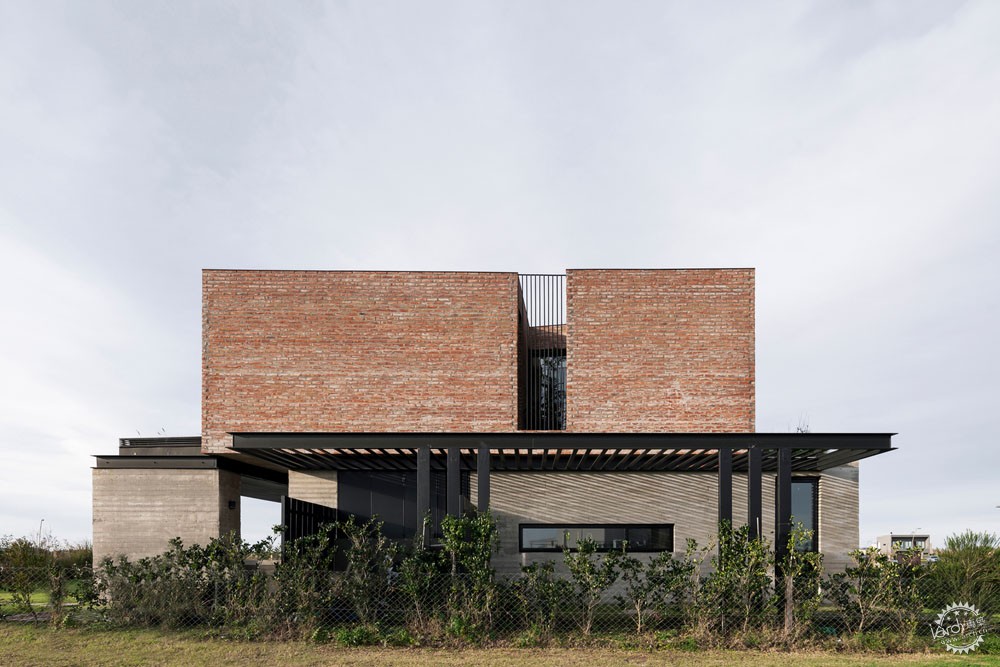
DaB House / BAM! Arquitectura
由专筑网飞鱼,小R编译
来自建筑事务所的描述:DaB住宅位于阿根廷布宜诺斯艾利斯的郊区,环境绿色开放,设计构思基于一些限制因素。本项目的主要特点是构成建筑旅游景点,将材料与光结合,紧凑平面布局,优化建筑空间。
Text description provided by the architects. The DaB House is conceived in a lot of limited dimensions on the outskirts of the city of Buenos Aires, in a green and open environment. The main challenge of the project was to generate an architectural tour that interacts with the materials and the light in contrast with the formal search of a very compact layout to optimize the square meters.
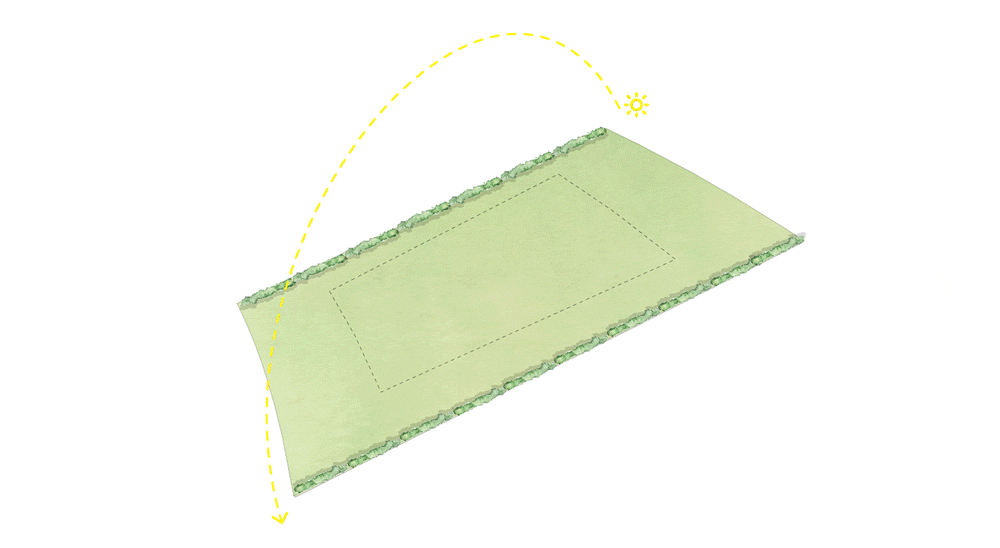
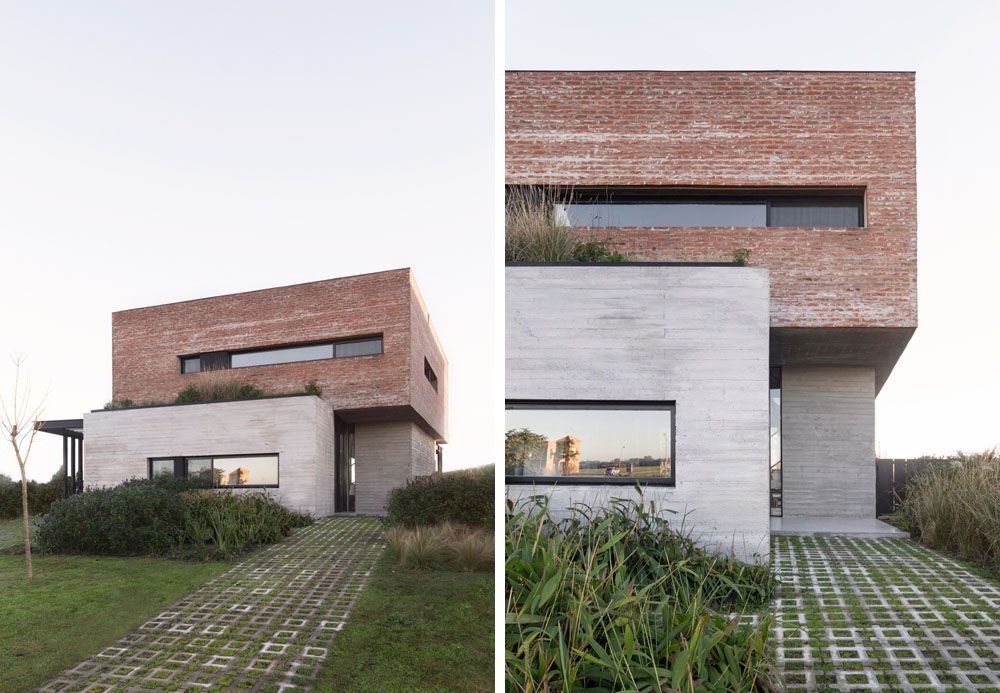
该建筑有两层,地面层是社交区域,与花园直接相连,立面采用木材质,有着全景流动形式。两层空间相互联系,二层为私人空间,与台阶式花园相连,形成观景平台和冥想空间。
The program has been organized on two floors. On the ground floor, the social areas are located, which have a direct relationship with the garden, therefore they connect in a comprehensive and dynamic way by means of a wooden joint that acts as a nucleus assembling the space between both levels. On the upper floor, the private areas are located, which have a relation with the terrace-garden that acts as a viewpoint and as a space for contemplation of nature.
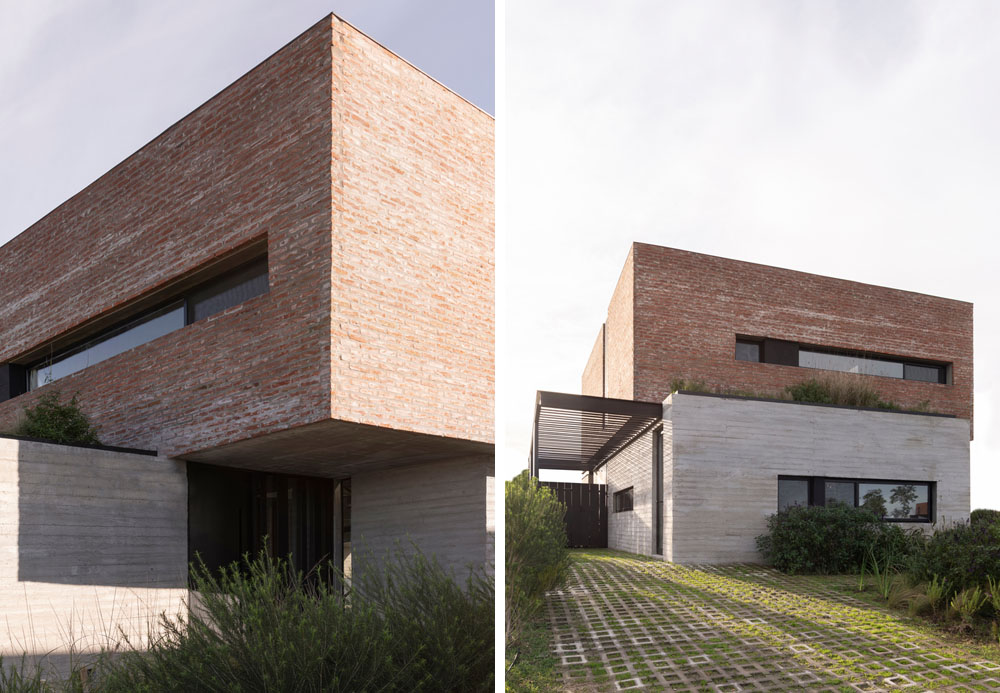
项目设计初期,材质的组合是重要部分,建筑师试图通过材质营造出有质感的建筑氛围。建筑首层为混凝土材质,二层为纯粹的砖砌体。两层之间设置有空腔和木质核心部分,钢材是有一种材料元素,将入口处的光线过滤引入室内。
When addressing the project, a very important aspect was the synthesis of materials with the aim of generating a sensory tour, provided by selected materials. A concrete base enables that a pure volume of bricks is placed on it. The connection between both levels is generated by a void along with a wooden nucleus. Iron, the last element, acts as a sieve to regulate the entry of light in the spaces.

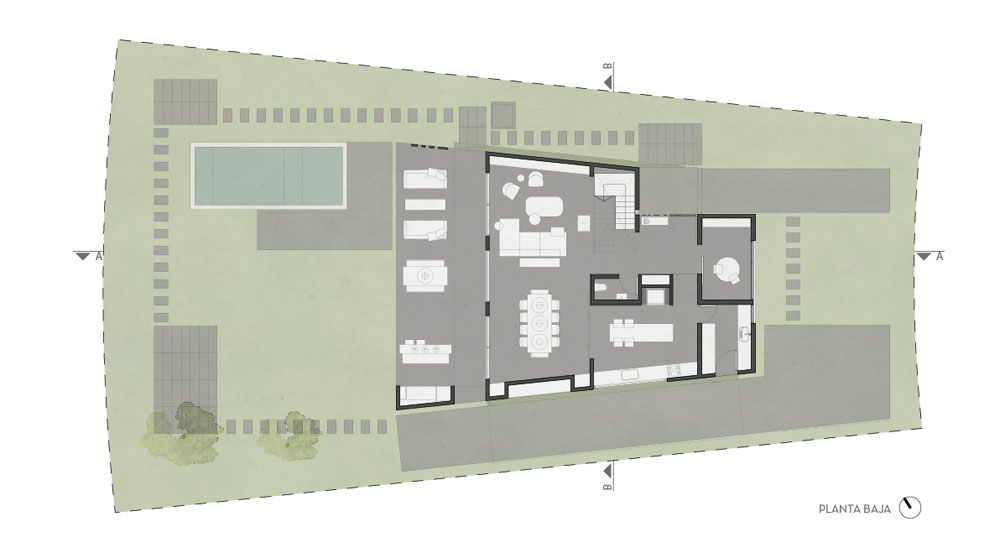

精致的材质、简约的线条使光线与自然成为主角,建筑将成为永恒。在这一项目中,光线是主要的建筑材料,建筑师采用直接和间接的形式吸引光线。每一个空间都充分考虑自然采光,并形成不同氛围的空间。
The use of noble materials with its pure and simple lines enables that light and nature act as protagonists and provides us a timeless project. In this project, the light, one of the main architectural materials, was used in a direct and indirect way. Every single space has been thought out bearing in mind its natural lighting and the possibility to generate diverse atmospheres with different shades thanks to it.
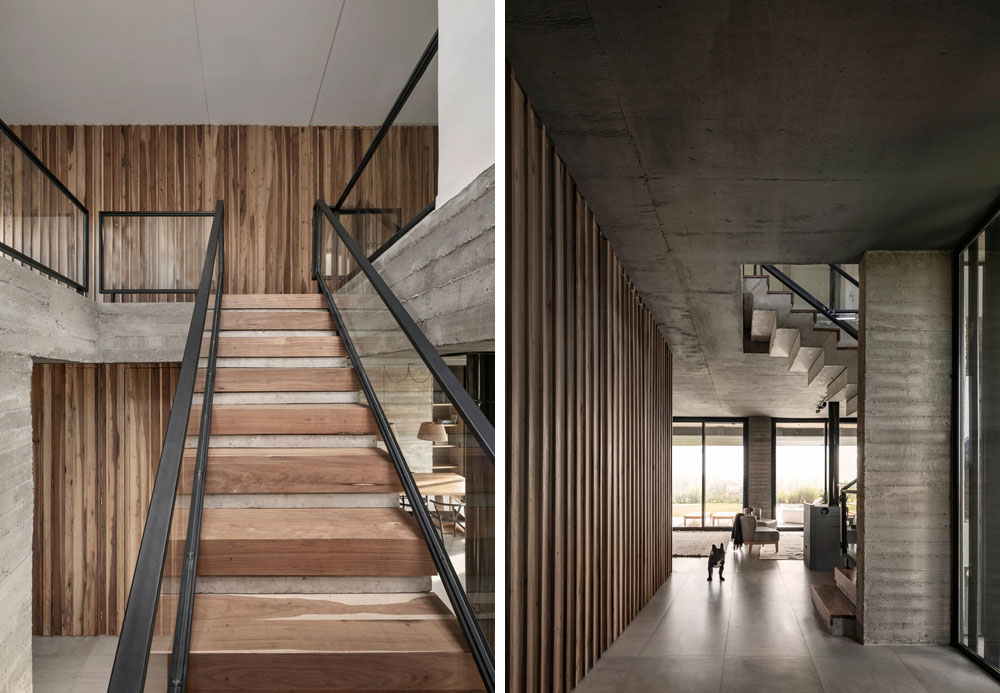
光线通过入口处的钢构件过滤进入室内,随着一天当中光线的变化产生不同的空间氛围。起居室和餐厅朝向花园部分,吸收光线,与自然亲密接触。二层,一些钢质遮阳板有效阻挡西晒和过于强烈的阳光的作用。
The light is regulated by steel filters in the access, where the generated shades change throughout the day. In the living and dining room, imposing openings that open towards the garden enable the entry of light and a direct connection with nature. On the upper floor, a series of iron sunshades was generated to block the strongest sun of North and West.
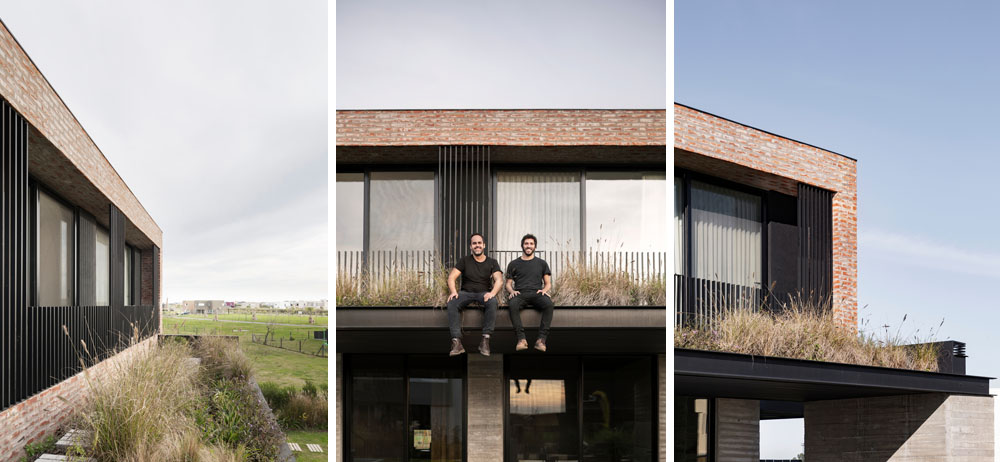
建筑与景观的对景关系也是设计重点,建筑师通过空间的虚与实将场地与建筑结合,同时采用台阶式花园让建筑融入自然,在二层,顶部光线洒向庭院之中,连接各个空间。
The duality of architecture and landscape is a concept that we have taken into account when it came to generating volumes that enable its integration with the place by means of filled spaces and voids. Another decision that provides us such an approach to nature is the use of terrace-gardens and the incorporation of patios and skylights on the upper floor, where each space has a connection with it.
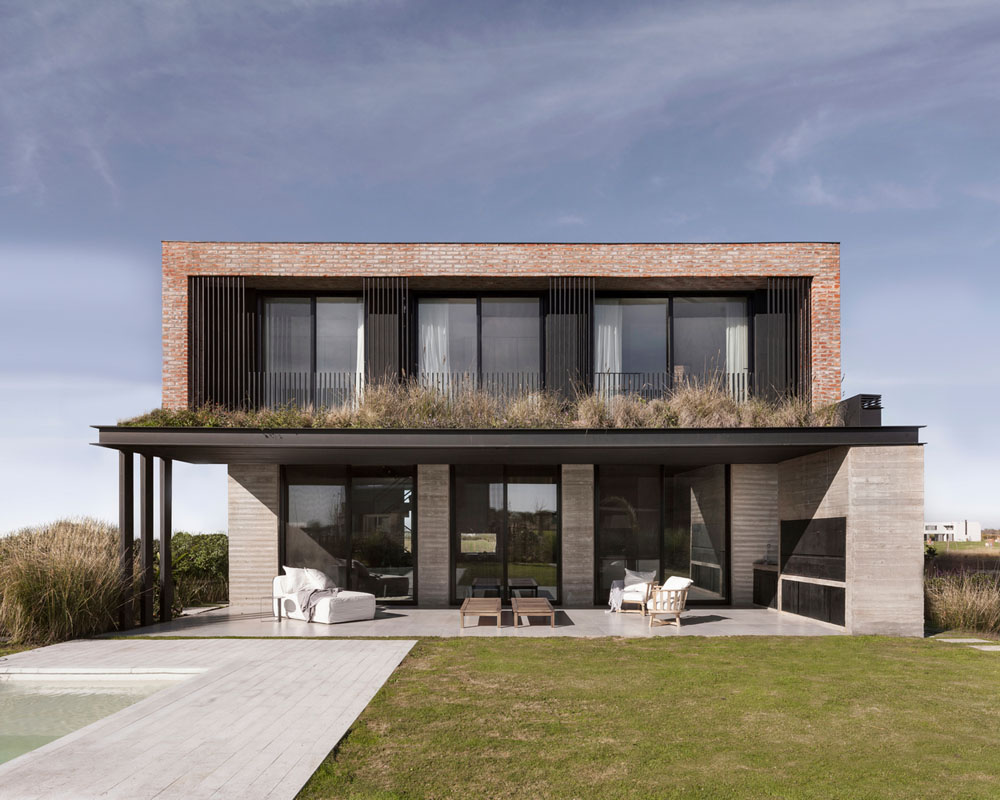
可持续措施体现在项目的每一个方面,例如地形的选择、朝向和主导风向等,而种植屋顶的使用带来很多优点。其他方面的设计也经过深思熟虑,建筑师通过使用雨水来灌溉植物,减少水资源的浪费,同时节约能源,而供暖与制冷则由地热能所控制。
Sustainability has been worked out from every aspect, starting with the selection of the terrain and the implantation in it bearing in mind its orientations and predominant winds. Then, the usage of a green roof with all the benefits that it provides. Other points that were taken into account were the reduction in water consumption by using rainwater for irrigation and the usage of energy-saving appliances. Heating and cooling were provided by geothermal energy.
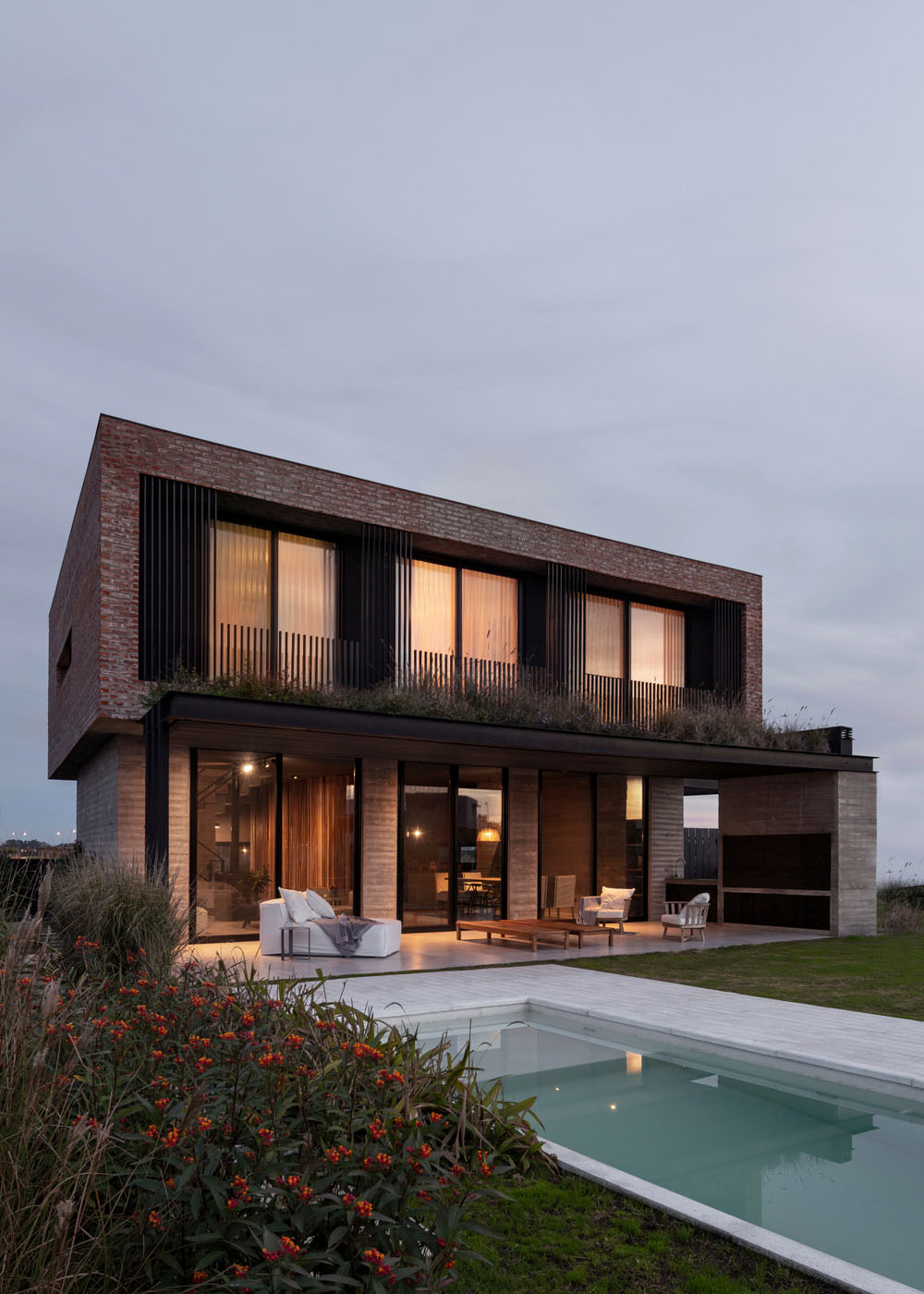
所有的空间都充分考虑自然光、室外景观和穿堂风等自然因素。这些特点不止节能,而且充分考虑使用者的舒适度。景观设计同样基于可持续性前提,对城市生态有很大的影响,院落中的景观采用当地的植物种类,构成微型城市空间。
All the spaces were carefully thought out so that they have natural light, exterior views and cross-ventilation, therefore generating a benefit not only regarding energy but also regarding comfort for its habitation. The landscape was designed based on sustainable premises that make an important contribution to urban ecology as from the use of local species, so we built a micro-urban patch made by native plant communities.
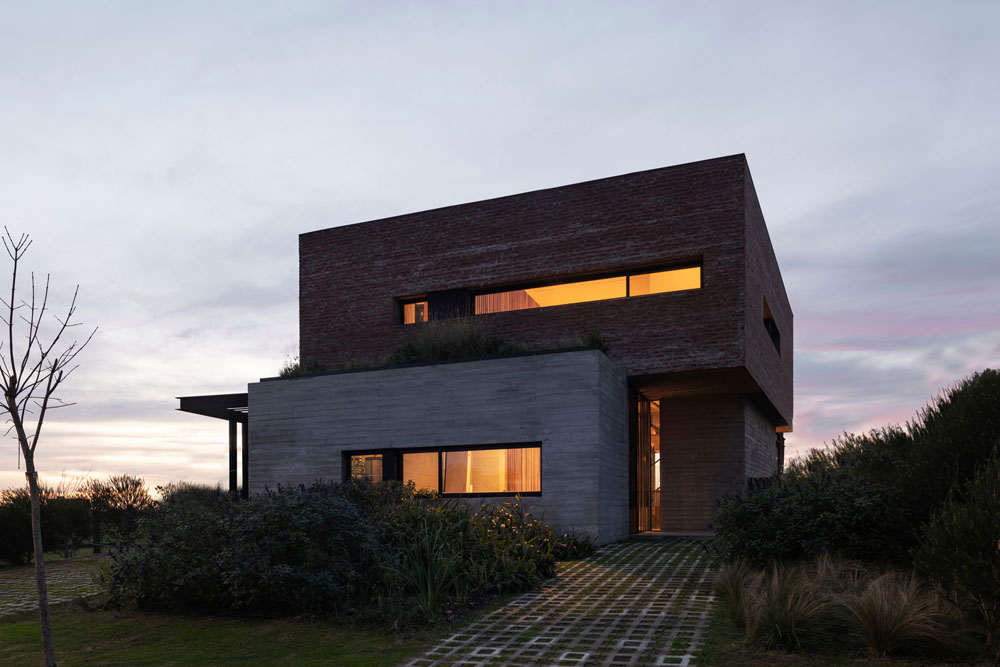


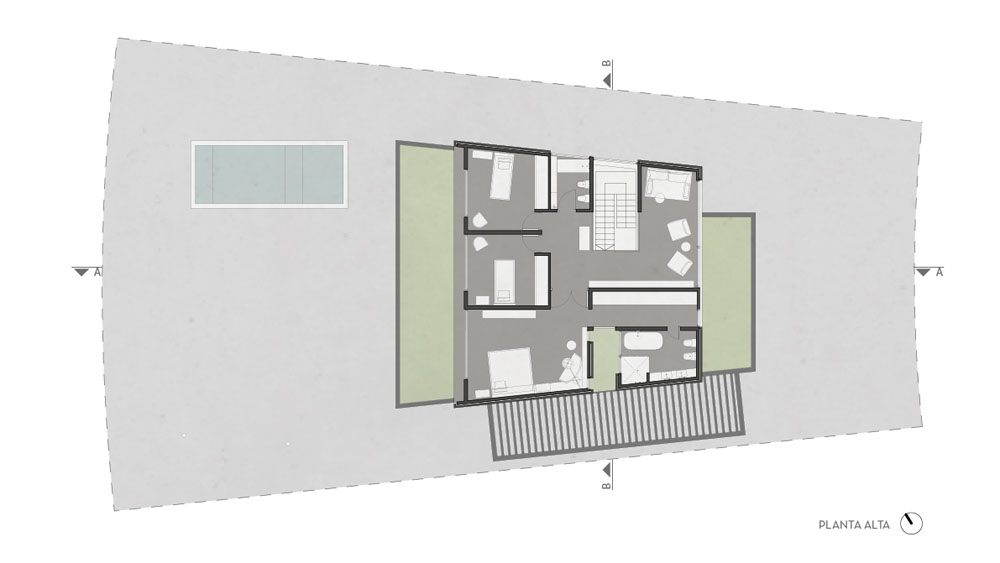




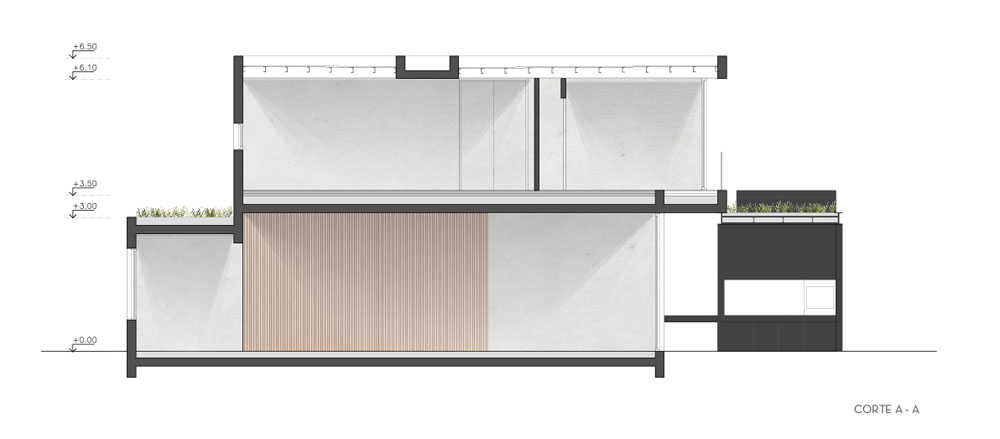
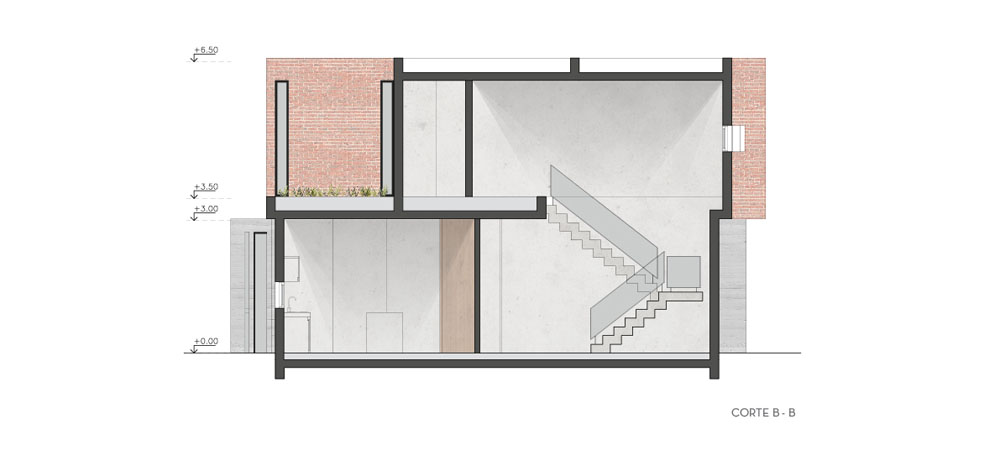
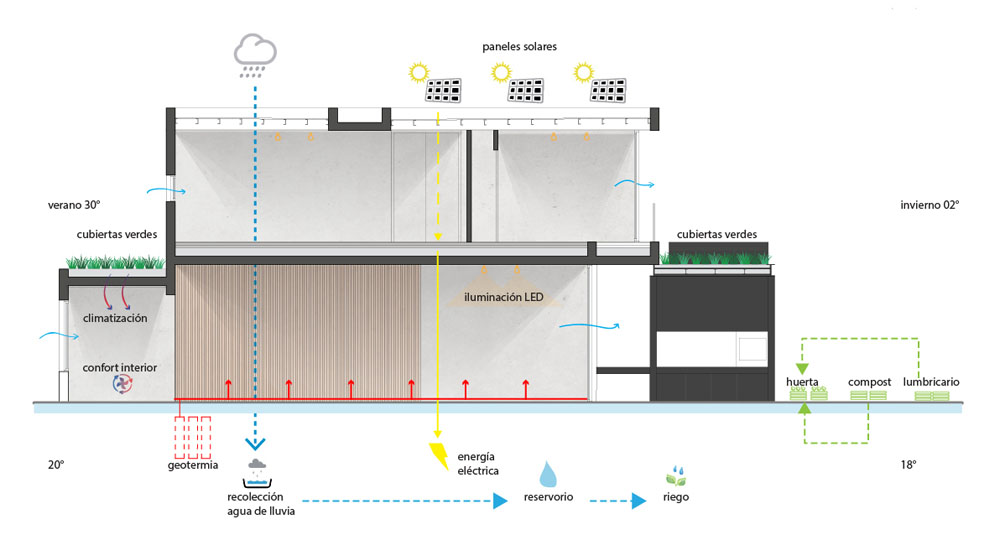
建筑设计:BAM!建筑
位置:阿根廷
类型:住宅
主创建筑师:Gonzalo Bardach, Matías Mosquera
设计团队:Gonzalo Bardach, Matías Mosquera, Clara Sakmann, Felicitas Van Thienen
面积:220.0 ㎡
项目时间:2019年
摄影:Federico Cairoli
制造商:FV, Roca The Gap, Perfiles y Servicios
景观设计:Bulla
结构设计:Pedro Gea
Architects: BAM! arquitectura
Location: Belén de Escobar, Argentina
Category: Houses
Lead Architects: Gonzalo Bardach, Matías Mosquera
Design Team: Gonzalo Bardach, Matías Mosquera, Clara Sakmann, Felicitas Van Thienen
Area: 220.0 ㎡
Photographs: Federico Cairoli
Manufacturers: FV, Roca The Gap, Perfiles y Servicios
Landscape Design: Bulla
Structural Design: Pedro Gea
|
|
